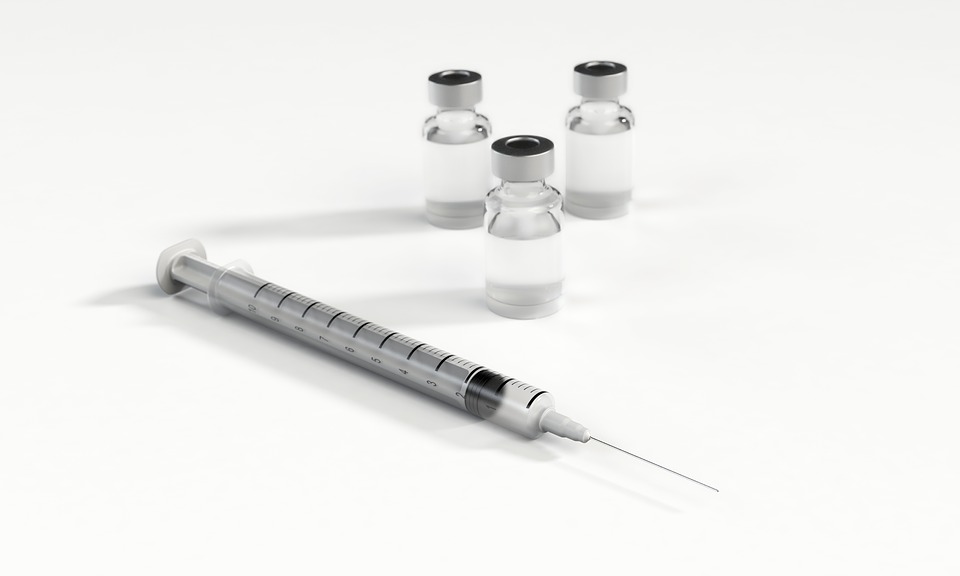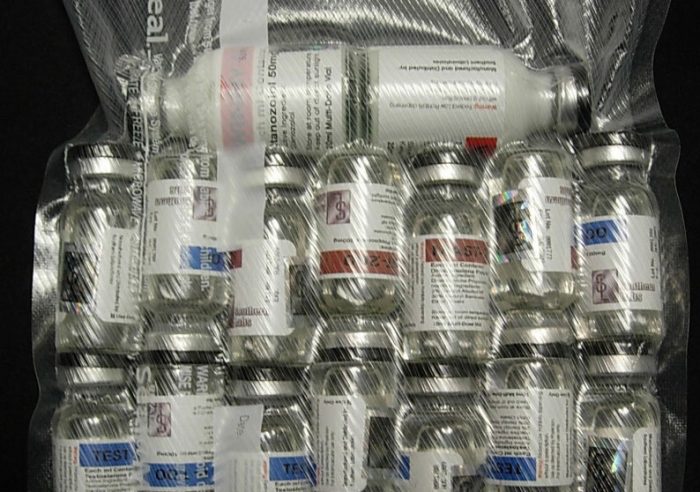
Trenbolone acetate is an anabolic steroid typically utilized in the field of veterinary medicine. The steroid is often used to prompt muscle growth in livestock, and it is injected into the muscle itself. Side effects include increased hair growth, heightened libido, voice changes, and acne as well as more dangerous side effects like heart attacks, stroke, liver damage, and possibly cancer.
Trenbolone is a synthetic androgen with powerful androgenic effects. As a point of comparison, testosterone has an anabolic and androgen rating of 100 while the effects of trenbolone are rated at 800 anabolic the facts and 550 androgenic effects respectively. Because of the dangerous side effects of trenbolone it is illegal for human use in many countries.
Let’s take a closer look at how trenbolone functions and its intended usage.
History Of Trenbolone
Trenbolone was first created around 1963, though it would be a number of years before it was approved for usage in the livestock industry as a tool for the promotion of beef cattle. This acceptance happened during the early 1970s and during the time that it was first used it was referred to as Finaject or Finajet. Trenbolone was discontinued by its original manufacturer during the 1980s, but subcutaneous pellets called Finaplix were still produced, and these pellets were intended to promote the development of lean meat and muscle mass in cattle prior to the cattle being shipped to the slaughterhouse. It was hoped that this would increase the profitability of livestock operations.
Is thought that trenbolone was developed by French pharmaceutical company, Roussel Uclaf, in the early 1970s. Despite the fact that the anabolic steroid trenbolone was developed for the purposes of livestock enhancement and veterinary medicine, trenbolone is used by some number of athletes and bodybuilders, although there are negative side effects associated with its usage. Trenbolone saw usage by bodybuilders and athletes in the 1980s, though many suppliers discontinued it in the late 1980s due to concerns over doping in sports and its harmful side effects on athletes. Usage of trenbolone esters is screen before by the United States anti-domain agency, as well as a similar drug screening agencies in various nations around the world.
Usage For Trenbolone

Photo: Public Domain, https://commons.wikimedia.org/w/index.php?curid=1551378
The primary usage for trenbolone is in the livestock industry, where the compound is frequently referred to as Finaplix. Trenbolone Was created to increase muscle mass in cattle and promote antigen effects. Trenbolone is frequently given to livestock to encourage muscle growth before the livestock is slaughtered. The trenbolone pellets given to livestock are typically given to livestock via a subcutaneous injection, and repeated injections are given until the animal is going to be slaughtered.
While trenbolone acetate was never intended for human usage, the drug is sometimes used by bodybuilders. Trenbolone acetate does not have human consumption guidelines because it was never approved for human usage. Bodybuilders and athletes have nonetheless used trenbolone to enhance performance and physique as previously mentioned when compared to testosterone as trenbolone estimated to be five times more potent, giving a variety of benefits when trying to gain muscle mass. Another perceived benefit of trenbolone is that when gaining muscle mass the compounds does not cause any fluid retention, unlike testosterone. This is said to give bodybuilders a leaner appearance. Because trenbolone doesn’t break down into estrogenic metabolites, various side effects are associated with the use of trenbolone in these contexts.
Like other anabolic steroids, trenbolone acetate has a variety of side effects. Because of trenbolone’s powerful androgenic properties, one of the most pronounced effects of trenbolone is virilization, which is part of why the drug is not recommended for physique enhancing purposes in women. Side effects of trenbolone are very similar to other anabolic steroids, although it does have unique side effects.
Side Effects Of Trenbolone
One of trenbolone’s most notable side effects is enhanced androgenic activity – or side effects associated with puberty in males. These include acne, increased facial hair and body hair growth, accelerated hair loss in the scalp, and oily skin. These side effects aren’t the same in an individual as they depend on an individual’s genetic profile. Women using trenbolone may experience deepening of their voice, generalization, and hirsutism.
Trenbolone is also noted to cause the diminished function of the gonads, the testes or ovaries. This is because trenbolone suppresses the natural production of testosterone even though it contributes to the development of muscle mass.
Trenbolone is also known to cause a number of different cardiovascular problems, negatively impacting an individual’s cholesterol. Trenbolone suppresses high-density lipoprotein’s while promoting the production of low-density lipoprotein’s, good cholesterol and bad cholesterol respectively. Trenbolone has a pronounced negative effect on cholesterol even amongst other anabolic steroids.

Photo: valelopardo via Pixabay, CC0
Prolonged use of trenbolone can also cause the development of a specific cough known as the “tren cough”. This occurs because trenbolone causes low levels of oxygen in the blood, leading to a condition known as hypoxemia and acute respiratory distress. Other respiratory problems can occur because of trenbolone as well, because of the fact that trenbolone causes fat to burn faster. Hypoxemia can also be caused by oil molecules being transported into the lungs as a result of trenbolone’s effects on biological mediators. The effects of trenbolone also kick off the activation of prostaglandins, a type of lipid compound which can be facial constrictive and inflammatory. The injection of trenbolone can exacerbate the irritation of these compounds and cause the vasoconstriction of the wall of the lungs, triggering the cough.
Trenbolone is an androgenic steroid, and no form of the steroid is estrogenic in nature. Because of this, the steroid is not capable of causing fluid retention unlike testosterone. Yet the progestogenic activity of the steroid is capable of causing the swelling of breast tissue.
Now that we have examined trenbolone specifically, let’s take a look at the usage of anabolic steroids in general. Anabolic steroids are synthetic copies of the hormone testosterone.
General Facts About Anabolic Steroids
Taking many anabolic steroids is against the law, and there are serious risks to experimenting with steroids due to issues with the purity of the product as well as the authenticity of the product. In addition, possessing anabolic steroids without a prescription can land an individual up to five years in federal prison.
Steroids come in both oral and injectable form, and the injectable steroids typically have more pronounced androgenic effects. Oral steroids may be more anabolic in nature and cause more side effects because of the fact that they must be processed by the liver. While steroids can increase muscle mass and strength, steroid usage can also lead to psychological dependencies. The use of steroids can prove addictive in nature, creating a desire to continue to see improvements in strength and muscle mass even if this improvement is reliant on steroid usage.
Depression is also a possible side effect of steroid usage because anabolic steroids tend to suppress testosterone and low testosterone levels can lead to depression. Depression linked to anabolic steroid use is driven not only by low periods of testosterone production but also by the increase in estrogen levels. Medical insurance typically does not cover drugs to control these depressive side effects due to the fact that the steroid use was illegal.

Photo: Public Domain, https://commons.wikimedia.org/w/index.php?curid=2811652
In general, users of anabolic steroids risk many other negative side effects in addition to lower testosterone production such as:
Increased blood pressure and cholesterol levels, headaches, cramps, nosebleeds, altered and negatively impacted by red functions, insensitivity to insulin, stunted growth, constipation, vomiting, diarrhea, nausea, intergenic side effects, and increased aggressiveness.
Abuse of steroids can even be fatal. Steroid abuse has been linked with the growth of tumors and the development of cancer, and a condition known as peliosis hepatis can occur when steroids are abused. Peliosi hepatis is where blood-filled cysts manifest themselves on the liver, and these cysts/tumors can rupture, causing internal bleeding. Strokes and heart attacks can also arise from steroid abuse, with steroid use leading to the development of atherosclerosis – the deposition of fat in the body’s arteries. These fat deposits block blood flow, which can cause a heart attack if blood flow to the heart is blocked or a stroke if blood flow to the brain is blocked.
Some medical professionals are of the opinion that anabolic steroids have legitimate medical uses such as combating muscle wasting due to degenerative diseases like AIDS, or for illuminating severe anemia within patients. Low dosages of anabolic steroids can also be used in hormone replacement therapy to treat people suffering from clinically low levels of testosterone. As an example, improper thyroid functioning may be addressed through thyroid medication. However, these specific uses for steroids should only be administered when overseen by a qualified medical professional.









